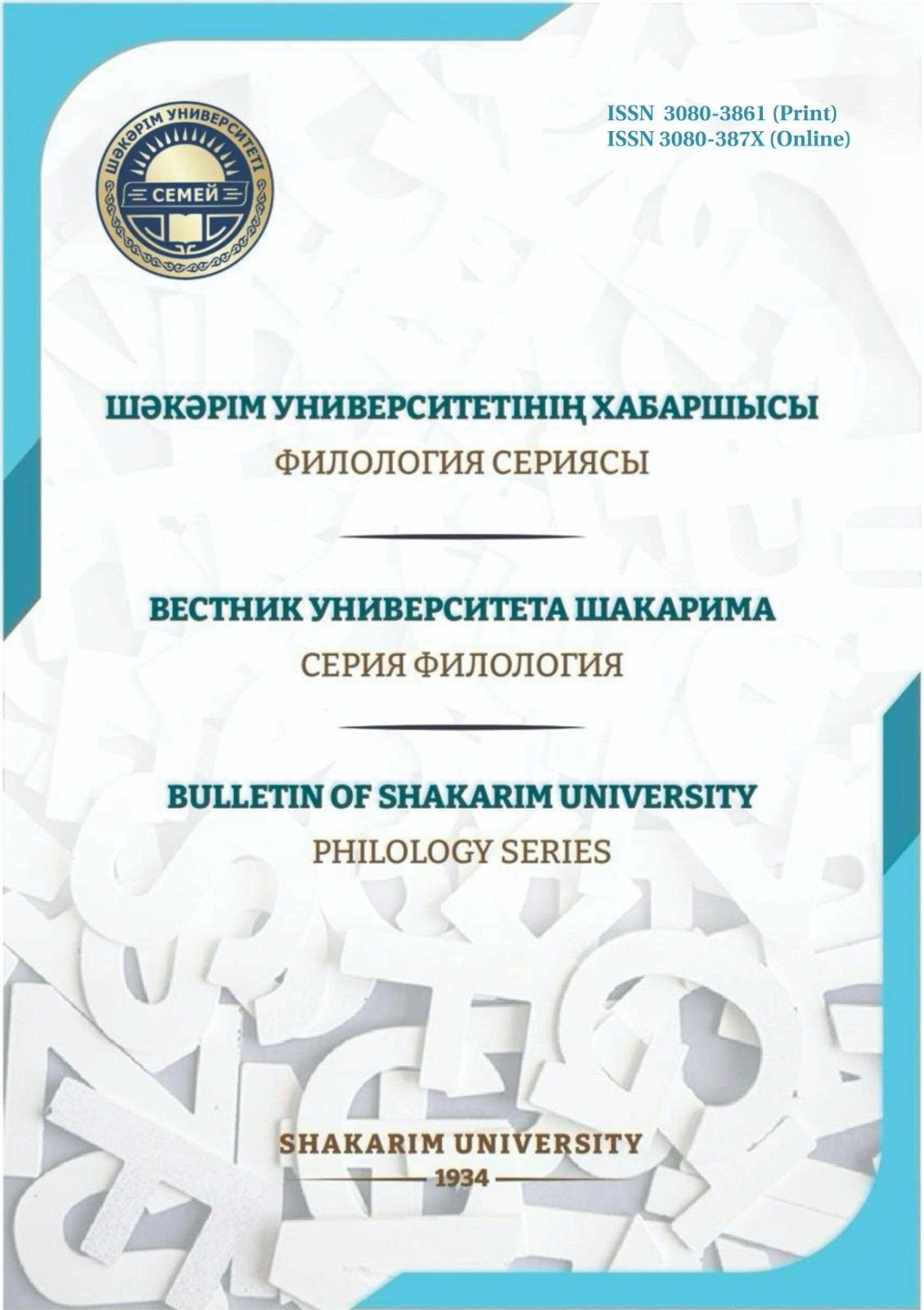The Transformation of the Imagery System in Abai's Poem Autumn in Russian Translations
Keywords:
Abai, transformation, analysis, image, autumn, translation, ethnocultureAbstract
This article explores the transformation of the imagery system in Abai Kunanbayev’s poem Autumn when translated into Russian. The objects of the study are the original Kazakh text and its most well-known Russian translations. The aim of the research is to identify changes in the system of poetic imagery that occur during the translation process, as well as to analyze the preservation of poetic figurativeness, the author’s style, and national cultural color. The study employs methods of comparative analysis, the hermeneutic approach, and elements of linguistic-stylistic and cultural analysis.
The most significant result of the research is the identification of the degree to which the translations correspond to the original imagery system, as well as the ways in which national and cultural elements are adapted for the Russian-speaking reader. The analysis shows that the translations demonstrate varying degrees of equivalence to the original: from literal reproduction to free interpretation, which affects the reader’s perception of the poem’s aesthetic and symbolic elements.
The scientific significance of the research lies in its in-depth analysis of the mechanisms of poetic translation and the preservation of artistic imagery in intercultural communication. The practical value of the study is in its applicability to the teaching of literary translation, Kazakh and Russian literature, as well as in the work of translators and literary scholars studying Abai’s oeuvre.
Downloads
Published
Issue
Section
License
Copyright (c) 2025 The editorial staff of the journal follows the copyright law of the Republic of Kazakhstan and relevant international agreements. The authors retain their copyright and provide the journal «Bulletin of Shakarim University. Series of Historical Sciences» right of first publication of the manuscript. The author has the right to copy and distribute the material in any medium and in any format, subject to appropriate reference to the journal. Readers and users can freely copy, distribute and adapt the material, provided that the author of the work is indicated and a link to this journal is provided. Copyright presupposes the integrity and responsibility of each co-author who made a significant contribution to the writing of the article. The author has the right to store his publications in an institutional or other repository of his choice, provided he provides the appropriate link to the journal’s website.

This work is licensed under a Creative Commons Attribution-NonCommercial 4.0 International License.
Copyright presupposes the integrity and responsibility of each co-author who made a significant contribution to the writing of the article.
The author has the right to store his publications in an institutional or other repository of his choice, provided he provides the appropriate link to the journal’s website.

